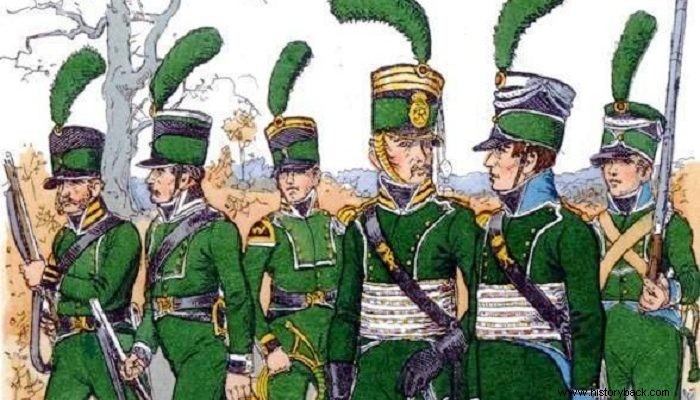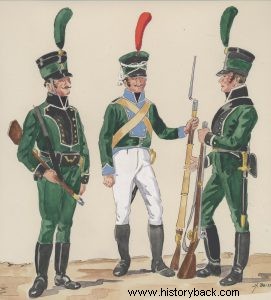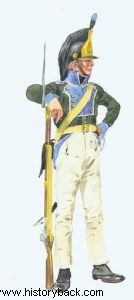
The Army of Württemberg was considered one of the best in Europe, despite its small size. His most elite division was his light infantry battalions.
After his victory at Austerlitz, Napoleon demanded the dissolution of the Holy Roman Empire of the German Nation and the creation of the French-controlled Confederation of the Rhine. Most of the small German states joined it, with or without their will. One of them was the duchy of Württemberg, which was soon upgraded by Napoleon to a kingdom.
Württemberg joined the Confederation of the Rhine with the obligation to offer 12,000 of its men for the common defense. Gradually this number doubled. The Württembergs were considered Napoleon's best German soldiers. The spearhead of the small kingdom's army was the infantry of the line.
However, from 1805, two battalions of light infantry and two battalions of Chasseurs were formed, according to French standards. These four battalions formed the elite of the army, writing a page of glory on the side of Napoleon, in the campaigns of 1806 against the Prussians, but mainly in 1809 against the Austrians and in 1812-13 against the Russians.
The two Light Battalions were formed in 1805. Each battalion had four companies of 170 men. The men were armed with the classic muzzle-loading musket and long spear. What differentiated them from their line infantry colleagues was the tactical doctrine they followed.
Light infantry were capable of fighting either in a three-gauge line, or in a six-gauge-deep charging phalanx like line infantry, but were also capable of fighting in a strafing formation.
In this case half the battalion remained drawn up either in line or in phalanx, while the other half deployed in front of the front of the battalion, in a strafing formation, with the men acting in pairs, so that when one fired, the other reloads his gun. However, if the tactical situation required it, especially when operating in populated areas or in forests, the whole battalion could act in a formation of acrobolism.
The light battalions wore uniforms similar to the infantry of the line, but with a green tunic instead of the blue of the infantry. The shirt had a light blue lapel, as did the cuffs of the shirt. Officers and soldiers wore the characteristic helmet that the common infantry also wore.
In 1807, however, the helmet was replaced by a shako-type tall hat. The aprons were white in color. Over the black, short, arvils, non-commissioned officers and hoplites wore black gaiters, fastened at the side, with a row of buttons. The officers wore leather boots and wore a characteristic belt around the waist, woven from cloth with silver threads. Non-commissioned officers also carried a wooden stick, with which they punished soldiers who disobeyed orders.
Non-commissioned officers carried sword and musket with bayonet. The elite carried only a sword and a front-loaded pistol. The officers also carried the same weaponry. A number of elite marksmen, per company, carried rifled rifles. The men wore ochre-colored leather accessories. The bayonet case and cartridge case, with a capacity of 60 cartridges, were black in color.
The two light battalions were united, in 1813, to form the 10th Light Infantry Regiment. After Napoleon's defeat in Russia, Württemberg initiated its accession to the alliance against the French emperor. The Württembergs joined the anti-French coalition before the battle of Leipzig in October 1813. Then their army was reorganized, after the disastrous losses it had suffered in Russia, and the light battalions were converted into infantry battalions of the line.
The two light battalions particularly distinguished themselves in the war of 1809 against the Austrians. The light battalions, together with the two Chasseur battalions, formed the Württemberg Light Infantry Brigade, under Major General Ferdinand von Huygel, and distinguished itself in a series of battles, from Bavaria to the Tyrol. The battalions particularly distinguished themselves in the battle of Abensberg, in 1809, included in the VIII Army Corps, under the French general Vandam.
Even harder fought the light battalions in Russia, included in the 25th Infantry Division, which was allocated to the III SS of New. The battalions were present at the fatal battle of Borodino, suffering heavy losses. Even worse was the retreat from Russia, in the middle of the horrible Russian winter. Few men managed to return.

Württemberg "Hunters" and light infantry (center).

Württemberg of the Light Infantry.
